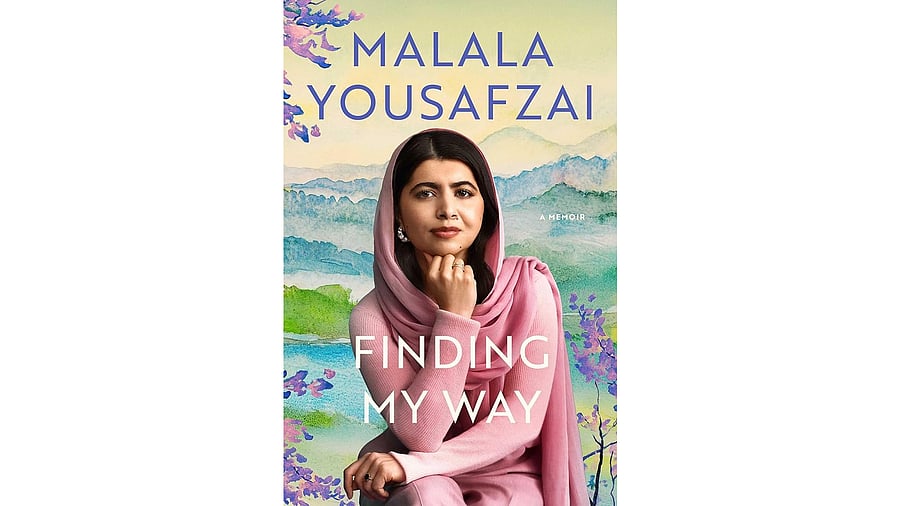
Finding My Way
This autobiography reads like the coming-of-age memoir of just another girl filled with self-doubt, unsure of many things, trying to find her niche in a world far from her comfort zone. It just so happens that the subject and writer is Malala Yousafzai, who was shot by a gunman back in Pakistan when she was 15 years old, survived the attack, underwent a clutch of facial reconstruction surgeries, won the Nobel Peace Prize in 2014, and went on to become what the tabloids termed an ‘international icon’.
Finding My Way makes for a very interesting read, Malala’s voice coming across to the reader as clear, honest, and even confiding. Which is either the way she is, or there has been some very artful writing indeed.
The book positions itself as speaking to those who know who Malala Yousafzai is, how she was airlifted from Mingora in Swat to Birmingham, which is where her parents, Ziauddin and Toor Pekai, now stay with Malala’s two younger brothers, Khushal and Atal. Malala finished her high school in Birmingham and went to Oxford to read Philosophy, Politics and Economics at Lady Margaret Hall.
This is an account of her years at Oxford, first struggling to make friends, then struggling to stay abreast of her academic workload. Eventually, she balances both; we are taken on almost every step of the journey, and willy-nilly, the reader starts rooting for her. The book reveals vulnerability, is studded with self-deprecating humour, and a startling maturity too, as when she acknowledges that she needs to curate her life, how she speaks, what she wears, and who she meets. If I wanted to promote education and equality for girls and women in Pakistan, I had to be inoffensive in every way, she says pragmatically.
Dodging many bullets
The Oxford years are breakout years in more ways than Malala envisaged. She gets to navigate her high-profile life, be just another teenager with crushes on suitable and unsuitable boys, scrapping constantly with her mother, going to dance parties, all the while keeping that halo untarnished, because any blowback would affect her fundraising efforts. Everything Malala does, she does with her security detail in tow; she is both rueful and pragmatic about her shadows.
I am an inspiration, a hero, an activist, she says at one point, but also a wallflower, a punchbag, a pay cheque. And yes, she knows the bullets she dodged: marriage in her early teens, several children before she turned 20, a life spent behind the wall of her husband’s house. But when asked about the bullets that she couldn’t dodge, she finds it’s no easy exchange. There was that weeklong coma, the multiple surgeries, the long recuperation, and the battle with PTSD. With the Taliban periodically renewing their pledge to kill her, she remains a target.
Time and again, she shows the reader glimpses of her determination. At one point, she states, “Too often in my home country, women’s bodies are used to measure the strength of our religious beliefs and national identity. Challenge the social norms created and enforced by men, and you disgrace your family and community.”
When she won the Nobel, she used the money to purchase land in Shangla, a remote cluster of villages in the mountains, and build a school there. It is one of the highs in Malala’s life when she gets to visit the school and interact with the vivacious girls studying there.
There are nods to India, as when she reminisces about styling her hair in the bathroom mirror at Mingora, imagining herself in a Bollywood movie with Shah Rukh Khan. Elsewhere, she talks of having watched Indian soap operas and having crushes on Bollywood stars.
There is also a love story here, Malala meeting the love of her life, Asser Malik, discreetly dating him for years, and eventually marrying him.
She was forced to grow up too soon, but this account reveals the child she is at heart. The account turns dark, though, when Malala reflects on the inroads the Taliban have made when they reclaimed Afghanistan.
The book throws one question at the reader: Is Malala Yousafzai now a child of privilege? The reader will have to read of her many surgeries, all the vicious threats and vile trolling she faces from hardline patriarchal elements, how she goes into panic attack mode when repressed memories of the attack in the school bus surface, all the doubts, fears, stoic acceptance and ceaseless striving to raise funds and continue being an education activist, and decide for themselves.
What does come through, clear as the crystal streams of the Swat valley, is that this is one formidable young woman who has her eyes firmly fixed on her purpose in life, who has come to terms with all she has to give up to achieve that purpose, and who just will not take no for an answer.